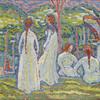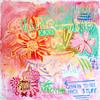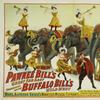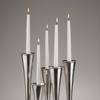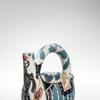Little Ladies: Victorian Fashion Dolls and the Feminine Ideal
- PHILADELPHIA, Pennsylvania
- /
- July 25, 2018
This fall, the Philadelphia Museum of Art will present Little Ladies: Victorian Fashion Dolls and the Feminine Ideal, an exhibition (Nov. 11, 2018, to March 3, 2019) starring four extraordinary dolls and their extravagant wardrobes. Known as Miss Fanchon, Miss G. Townsend, Miss French Mary, and Marie Antoinette, they were made in France in the 1860s and 1870s. The ultimate toys for privileged girls of this period, these dolls reflected the world of adult fashion, being fully equipped with miniature versions of the myriad garments, accessories, and other personal possessions of a well-to-do Victorian lady. As models of womanhood, these fashion dolls represented Victorian culture, when most believed that the aim of a girl’s life was to marry and raise children, and women were exhorted to dress well, follow the strictures of contemporary etiquette, and excel in their proper sphere of domestic and social duties.
The dolls, which measure between 18 to 22 inches in height and have painted bisque heads, leather bodies, and hair wigs, come with tiny accoutrements that are notable for their number, detail, and variety. Miss Fanchon’s trunk, for example, contains over 150 objects, including eighteen dresses, and her gloves, which measure just over two inches tall, have all the features of full-size gloves, including gussets, points, and button closures.
The dolls are furnished with dresses for every occasion, from housework to fancy social events, as well as undergarments (chemises, drawers, petticoats, corsets, hoop skirts, bustles, and even tiny dress shields), outerwear, and accessories including bonnets, hair ornaments, jewelry, fans, and footwear.
In addition to personal care items such as a toothbrushes, combs, and mirrors, two dolls are provided with clothes hangers (not yet common in full-size households), while the plethora of other objects includes tiny books, visiting cards, a photo album, sewing kit, sheet music, writing set, alarm clock, newspaper, opera glasses, and even roller skates.
These charming miniature objects will be arranged in the exhibition to illustrate various facets of the world of a fashionable Victorian woman. Displays will highlight the importance accorded to proper feminine appearance and the skills, activities, and refinements then deemed necessary for the ideal woman, from the management of a household to maintaining social ties. While the exhibition highlights the delights of these special playthings, it will also touch on a range of topics—the roles of fashion, toys, dressing up, imagination, play, and gender roles—and explore how social ideals and values are shaped and often subtly imparted to children in entertaining ways.
“The fortunate young girl who played with one of these dolls—changing clothes for different times of day, paying social calls, hosting tea parties, and mimicking other grown-up behaviors—could imagine her future life,” said exhibition organizer Kristina Haugland, The Le Vine Associate Curator of Costume and Textiles and Supervising Curator for the Study Room. “Such play helped her master the arts of dressing and etiquette and become familiar with accepted social conventions, important lessons in the Victorian era, which defined the ideal woman’s role to please, adorn, and refine. Taken together, these tiny masterpieces—so amazing in their individual detail—create a remarkable time capsule of Victorian life.”






